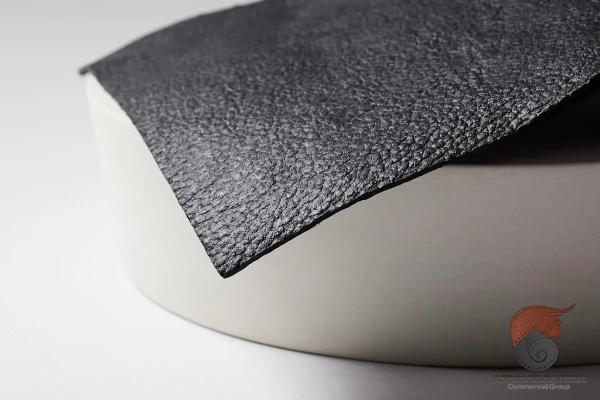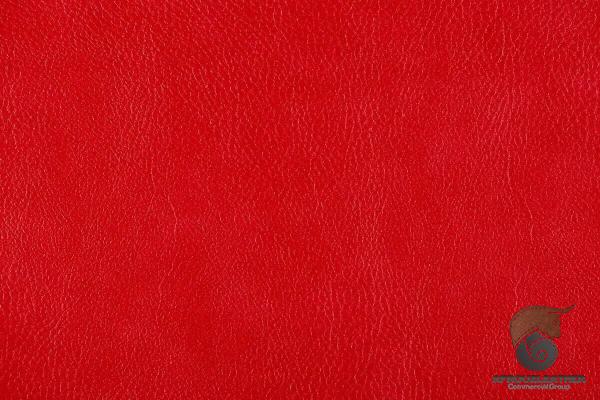Raw patent leather is a type of top-grain leather that undergoes a unique finishing process, resulting in a glossy, shiny, and water-resistant surface. This article provides a comprehensive summary of raw patent leather, covering its production methods, common applications, and the advantages it offers. 1. Production Process: The production of raw patent leather involves several key steps: a. Tanning: Raw patent leather starts with high-quality hides, typically sourced from bovine or goat skins. These hides are first treated through a tanning process, which converts them into a more durable, flexible, and long-lasting material. b. Dyeing: After tanning, the leather is dyed using various pigments to achieve the desired color. This step allows for customization according to fashion trends and consumer preferences. c. Coating: The most distinctive feature of raw patent leather is its high-gloss finish. To achieve this effect, the leather is coated with a layer of polymeric material, typically made of polyurethane or a similar vinyl compound.
leather
 The coating process creates a uniform and reflective surface. Multiple layers of coating may be applied, followed by buffing, to produce an even higher sheen. d. Curing: Once the coating process is complete, the leather undergoes a curing process, which allows the coating to solidify and harden, resulting in increased durability and resistance to abrasion and scuffing. 2. Distinguishing Features: Raw patent leather possesses several distinctive characteristics that set it apart from other types of leather: a. Glossy Appearance: The high-gloss finish of raw patent leather gives it a sleek and formal look. This quality makes it highly desirable for formal footwear, accessories, and luxury items such as handbags and wallets. b. Water Resistance: The coating applied during the production process provides raw patent leather with water-resistant properties. This feature makes it particularly suitable for products like rain boots, jackets, and handbags, as it helps protect them from water damage. c. Scratch and Scuff Resistance: The curing process enhances the leather’s ability to resist scratches, scuffs, and other forms of wear and tear. This increased durability ensures that raw patent leather products maintain their appearance over an extended period, making them ideal for high-traffic applications. d. Easy Maintenance: Raw patent leather is relatively easy to clean and maintain. Its surface can typically be wiped clean with a soft cloth or mild cleaning solution, making it a practical choice for busy individuals.
The coating process creates a uniform and reflective surface. Multiple layers of coating may be applied, followed by buffing, to produce an even higher sheen. d. Curing: Once the coating process is complete, the leather undergoes a curing process, which allows the coating to solidify and harden, resulting in increased durability and resistance to abrasion and scuffing. 2. Distinguishing Features: Raw patent leather possesses several distinctive characteristics that set it apart from other types of leather: a. Glossy Appearance: The high-gloss finish of raw patent leather gives it a sleek and formal look. This quality makes it highly desirable for formal footwear, accessories, and luxury items such as handbags and wallets. b. Water Resistance: The coating applied during the production process provides raw patent leather with water-resistant properties. This feature makes it particularly suitable for products like rain boots, jackets, and handbags, as it helps protect them from water damage. c. Scratch and Scuff Resistance: The curing process enhances the leather’s ability to resist scratches, scuffs, and other forms of wear and tear. This increased durability ensures that raw patent leather products maintain their appearance over an extended period, making them ideal for high-traffic applications. d. Easy Maintenance: Raw patent leather is relatively easy to clean and maintain. Its surface can typically be wiped clean with a soft cloth or mild cleaning solution, making it a practical choice for busy individuals.
Specifications of leather
 3. Common Applications: Raw patent leather finds extensive use in various industries, including fashion, footwear, automotive, and interior design. Some common applications include: a. Footwear: Patent leather shoes, such as formal dress shoes, heels, and loafers, are popular choices due to their glossy appearance. The water-resistant feature also makes patent leather suitable for rain boots and other types of footwear that require protection from moisture. b. Accessories: Handbags, wallets, belts, and other fashion accessories benefit from the elegant look and durability of raw patent leather. The water resistance and scratch resistance of this material also make it suitable for watch straps and other small accessories. c. Automotive Interiors: Raw patent leather is sometimes used as a luxurious upholstery option for car seats, door panels, and steering wheels, providing a sophisticated and visually appealing interior. d. Furniture: In interior design, raw patent leather is occasionally used for upholstered chairs, sofas, and other furniture pieces, lending a touch of opulence to living spaces. 4. Advantages of Raw Patent Leather: Raw patent leather offers several advantages that contribute to its popularity in various industries: a. Aesthetics: The high-gloss finish of patent leather imparts a luxurious and visually striking look to products in which it is used.
3. Common Applications: Raw patent leather finds extensive use in various industries, including fashion, footwear, automotive, and interior design. Some common applications include: a. Footwear: Patent leather shoes, such as formal dress shoes, heels, and loafers, are popular choices due to their glossy appearance. The water-resistant feature also makes patent leather suitable for rain boots and other types of footwear that require protection from moisture. b. Accessories: Handbags, wallets, belts, and other fashion accessories benefit from the elegant look and durability of raw patent leather. The water resistance and scratch resistance of this material also make it suitable for watch straps and other small accessories. c. Automotive Interiors: Raw patent leather is sometimes used as a luxurious upholstery option for car seats, door panels, and steering wheels, providing a sophisticated and visually appealing interior. d. Furniture: In interior design, raw patent leather is occasionally used for upholstered chairs, sofas, and other furniture pieces, lending a touch of opulence to living spaces. 4. Advantages of Raw Patent Leather: Raw patent leather offers several advantages that contribute to its popularity in various industries: a. Aesthetics: The high-gloss finish of patent leather imparts a luxurious and visually striking look to products in which it is used.
buy leather
 Its distinctive appearance adds value and style to fashion accessories, footwear, and luxury goods. b. Durability: The coating and curing process significantly enhances the durability of raw patent leather, making it resistant to scratches, scuffs, and general wear and tear. This durability ensures that products made with patent leather maintain their visual appeal and functional quality over time. c. Water Resistance: The water-resistant properties of raw patent leather make it a practical choice for products that may come into contact with moisture. This feature helps preserve their appearance and extends their lifespan. d. Easy Maintenance: Raw patent leather’s smooth and glossy surface is relatively easy to clean and maintain. The ability to wipe away dirt and stains quickly adds convenience to its usage. Conclusion: Raw patent leather stands out as a versatile and popular material, valued for its aesthetic appeal, durability, water resistance, and ease of maintenance. Its glossy finish lends an elegant touch to various products in the fashion, footwear, automotive, and interior design industries. Understanding the production process, distinguishing features, common applications, and advantages of raw patent leather can help businesses make informed decisions when incorporating it into their products.
Its distinctive appearance adds value and style to fashion accessories, footwear, and luxury goods. b. Durability: The coating and curing process significantly enhances the durability of raw patent leather, making it resistant to scratches, scuffs, and general wear and tear. This durability ensures that products made with patent leather maintain their visual appeal and functional quality over time. c. Water Resistance: The water-resistant properties of raw patent leather make it a practical choice for products that may come into contact with moisture. This feature helps preserve their appearance and extends their lifespan. d. Easy Maintenance: Raw patent leather’s smooth and glossy surface is relatively easy to clean and maintain. The ability to wipe away dirt and stains quickly adds convenience to its usage. Conclusion: Raw patent leather stands out as a versatile and popular material, valued for its aesthetic appeal, durability, water resistance, and ease of maintenance. Its glossy finish lends an elegant touch to various products in the fashion, footwear, automotive, and interior design industries. Understanding the production process, distinguishing features, common applications, and advantages of raw patent leather can help businesses make informed decisions when incorporating it into their products.

Your comment submitted.